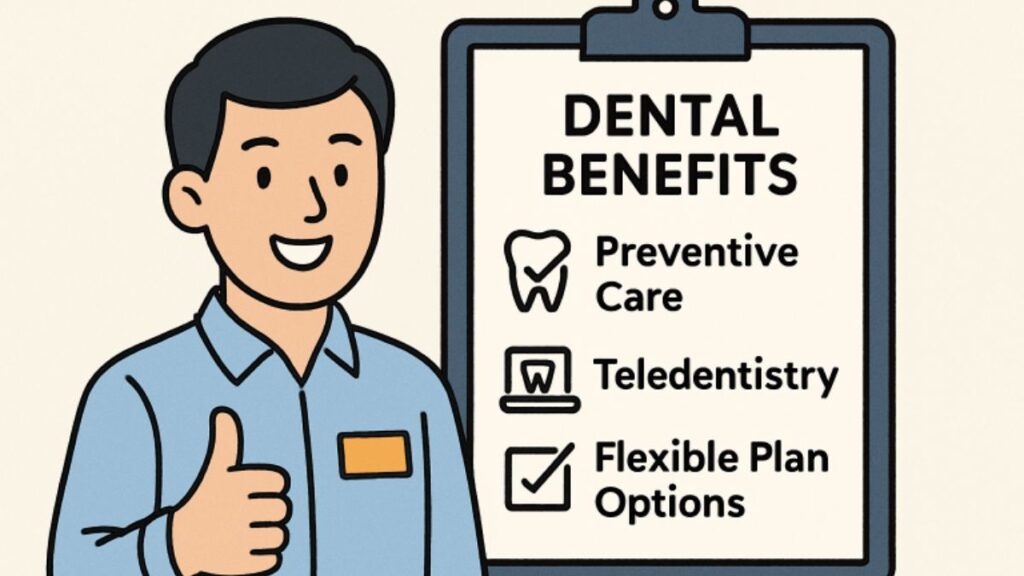As employers compete for top talent in today’s rapidly evolving job market, comprehensive dental benefits are standing out as a critical component of a holistic employee benefits package. With the rising importance of employee wellness and satisfaction, understanding the latest trends in dental benefits can give organizations a significant edge. For those seeking deeper insights and resources on competitive dental coverage strategies, you can learn more about solutions that meet the needs of modern workforces.
Dental benefits are no longer a “nice-to-have” perk. They have become an expectation among employees, impacting not just oral health but also overall well-being and workplace productivity. These benefits can be a deciding factor in attracting and retaining candidates, especially as plans increasingly adapt to new technologies and employee preferences.
From shifting costs to a spotlight on preventive services and digital care options, several themes are molding the future of employer-sponsored dental benefits. Understanding these trends allows companies to craft benefit strategies that drive both satisfaction and efficiency proactively.
As the emphasis grows on integrating dental benefits into broader well-being initiatives and on adjusting to diverse workforce needs, modern plan design and administration are more critical than ever.
Rising Costs of Dental Benefits
Employers should anticipate dental benefit cost increases of 4% to 5% heading into 2026. This projected rise is largely driven by inflation, greater utilization of dental services, and rapid advancements in dental technology, including digital imaging, laser treatments, and more sophisticated restorative procedures. These innovations, while improving patient outcomes, come with higher costs that insurers and employers must factor into annual budgeting.
For organizations, proactive planning is essential to balance cost control with quality coverage. Employers are increasingly exploring strategies such as layered benefit options, where basic services are fully covered and more specialized treatments may require cost sharing, as well as negotiating network discounts with providers. Such tactics help manage expenses without compromising the overall value of dental benefits.
Additionally, alternative plan designs are gaining popularity as a way to maintain comprehensive offerings while keeping costs manageable. Voluntary dental plans allow employees to choose additional coverage at their own expense, while high-deductible dental plans can reduce premiums while encouraging more judicious use of services. Clear and transparent communication with employees regarding these changes, including explanations of cost-sharing structures and coverage limits, ensures that staff understand the benefits available to them and reduces potential confusion or dissatisfaction.
Emphasis on Preventive Care
Plan providers and employers are increasingly prioritizing preventive dental care, recognizing its role in both promoting overall health and controlling long-term costs. Routine cleanings, dental exams, and early interventions can significantly reduce the likelihood of complex issues such as root canals, crowns, or periodontal surgeries, which are far more expensive to treat. This preventive approach reflects the broader trend in healthcare toward proactive management, emphasizing wellness and early detection rather than reactive treatment.
Promoting preventive services often involves removing financial barriers for employees. Many plans cover routine cleanings, X-rays, and exams at low or no cost, making it easier for members to maintain regular care. This focus not only improves oral health outcomes but also has measurable benefits for employers, including reduced absenteeism, higher productivity, and lower long-term claims costs.
Employers who actively communicate the value of preventive dental care—through wellness programs, reminders, and educational initiatives—can foster healthier habits among employees. By investing in prevention, organizations can protect their workforce and financial resources, creating a win-win scenario that reinforces the importance of oral health to overall employee well-being.
Expansion of Telehealth and Teledentistry
The digital health revolution, accelerated by the COVID-19 pandemic, continues to shape dental benefits. Approximately 55% of large employers plan to enhance access to virtual health services, including teledentistry. These services provide employees with the convenience of remote dental consultations, assessments, and follow-ups, bypassing traditional barriers to access such as location or scheduling constraints.
Teledentistry is especially impactful for employees in rural or underserved areas, ensuring more consistent and affordable care. As its adoption expands, employers benefit from reduced delays in treatment and improved engagement with preventive and urgent care services.
Integration with Overall Health and Wellness Programs
Forward-thinking companies are increasingly integrating dental benefits into their broader wellness strategies, recognizing that oral health is deeply connected to overall health. Research shows that poor oral hygiene and untreated dental issues can contribute to severe systemic conditions, including heart disease, diabetes, and respiratory illnesses. By embedding dental care within a comprehensive wellness program, employers can help employees identify health issues early and take preventive action, ultimately improving long-term outcomes and reducing total medical costs.
Many organizations are adopting multi-faceted wellness initiatives that include regular dental screenings, oral health education, and lifestyle support such as nutrition guidance and smoking cessation programs. According to the CDC, maintaining good oral health is a crucial part of overall wellness, and programs that promote preventive dental care can significantly impact long-term health outcomes. Integrating dental data with other health metrics enables healthcare providers to spot trends that might otherwise go unnoticed, enabling more proactive, personalized care for employees. Over time, this approach not only improves individual health but also enhances overall workforce productivity and engagement.
To encourage participation, employers are deploying targeted educational campaigns, incentives, and partnerships with dental providers. Incentives may include reduced premiums, wellness rewards, or access to on-site dental services, all designed to lower barriers to care and reinforce positive health behaviors. By combining these strategies with broader wellness efforts, such as mental health support, fitness programs, and chronic disease management, organizations create a synergistic effect that holistically strengthens employee health. Ultimately, integrating dental benefits with overall wellness programs demonstrates a commitment to employee well-being and supports a healthier, more resilient workforce.
Conclusion
Staying ahead in employee dental benefits requires employers to closely follow emerging trends and adapt strategies to the unique preferences and needs of their teams. By addressing rising costs, championing preventive care, expanding access through telehealth, and aligning dental coverage with comprehensive wellness programs, organizations can deliver competitive, future-focused benefits packages that attract, support, and retain valuable talent.






